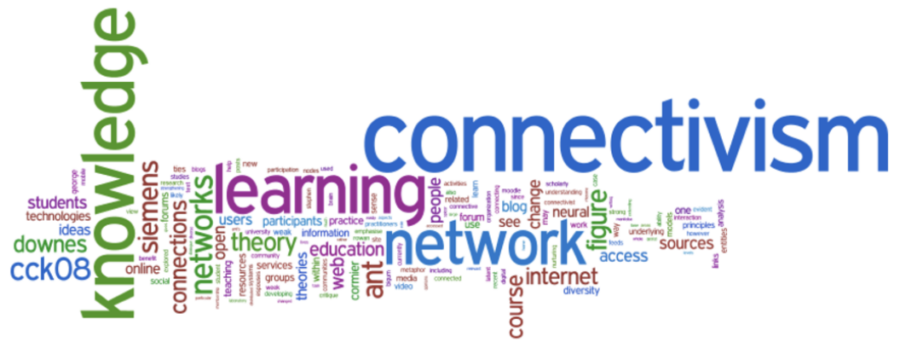Hi everyone!
Module 2 on identity, community, space, and place covers topics of digital identity and digital spaces. A concept I found particularly interesting in this module was the theory of connectivism.
According to Siemens (2005), connectivism is “the integration of principles explored by chaos, network, and complexity and self-organization theories.” In other words, collectivism is when learning occurs through connected peers and sharing opinions, views, and ideas—it is a collaborative process. In collectivism, there are four activities: aggregation, relation, creation, and sharing. Aggregation is when “learners access and curate a wide range of resources; relation, in which learners are encouraged to relate content to their earlier experiences; creation, in which learners are encouraged to create an artifact of their own; and sharing, in which learners share their work with others in the network” (Weller, 2020).

I study the discipline of psychology, where collectivism is not used much. Currently, in psychology, professors use learning approaches such as behaviourism and cognitivism. If psychology were to design a course that emulates connectivisim, content delivery would change drastically. Instead of lecture and exam-based learning, psychology classes would have to focus on discussion-based and community education. Further, if connectivism were to be employed in psychology classes, students would need to be provided more opportunities to make choices about learning. More ways that connectivism can be utilized in psychology classes are through group projects, discussions, and engaging with other people. These methods would entirely change the format of psychology courses.
Considering the four key activities (aggregation, relation, creation, and sharing), here is an example of what they would look like in a psychology class. For example, a professor could ask us to write a group essay on a disorder in the Diagnostic and Statistical Manual of Mental Disorders (DSM-5). To complete this group essay, learners with me to explore various resources (aggregation), relate the information in these resources to our own experiences (relation), create the paper itself (creation), and share our essay with others in our class (sharing) in hopes of creating some sort of discussion.
As I stated earlier, employing connectivism in our learning would drastically change the teaching mode. Rather than using lecture-based classes and giving exams, professors would need to provide opportunities for students to work together on group projects, engage in discussions, and create more opportunities for students to interact with one another and discuss course content.
Further, because students would be engaging in so much group work, professors would need to evaluate us on this work as we would not have much time for other assessments such as quizzes or exams. To create a class that strictly employs connectivism, assessments would need to be based on group work.

Employing connective ism in a psychology class would not be a successful paradigm for psychology. The education of psychologists is held to a very high standard, with many concepts and items we must learn to advance to a master’s degree or a doctorate. Professors need to be sure that we completely understand all of the material being presented to us, rather than just a few items that the assigned group work covered. This is why psychology classes are primarily lecture-based, with exams as assessments.
Connectivism places a lot of emphasis on group work and discussion-based learning, which could pose some potential obstacles to learners, instructors, and institutions. A potential challenge for learners could be that some people just do not learn from discussions. For instructors, a potential challenge could be creating various activities for assessment that employ connectivism. Lastly, a potential challenge for the institution could be that students are not learning what they should be in class because groups are not focusing on all the material presented, just a few significant concepts.
I chose this learning portfolio prompt because I am interested in learning theories and how people might learn best. It intertwines with psychology as people are unique; therefore, people are unique in how they learn. I also thought it would be enjoyable to relate this learning theory to my discipline of psychology. Finally, this activity made me appreciate how my professors currently run their psychology courses, as I very much enjoy your lecture-based learning and exams as assessments.
Thanks for the read 🙂
References
Siemens, G. (2005). Connectivism: A learning theory for the digital age. Retrieved from http://er.dut.ac.za/bitstream/handle/123456789/69/Siemens_2005_Connectivism_A_learning_theory_for_the_digital_age.pdf
Weller, M. (2020). “Chapter 17 – 2010 Connectivism.” 25 Years of Edtech. AU Press. https://read.aupress.ca/read/25-years-of-ed-tech/section/198057f5-1a3e-4436-a4b8-c6e1a3e0bd69#ch17.

